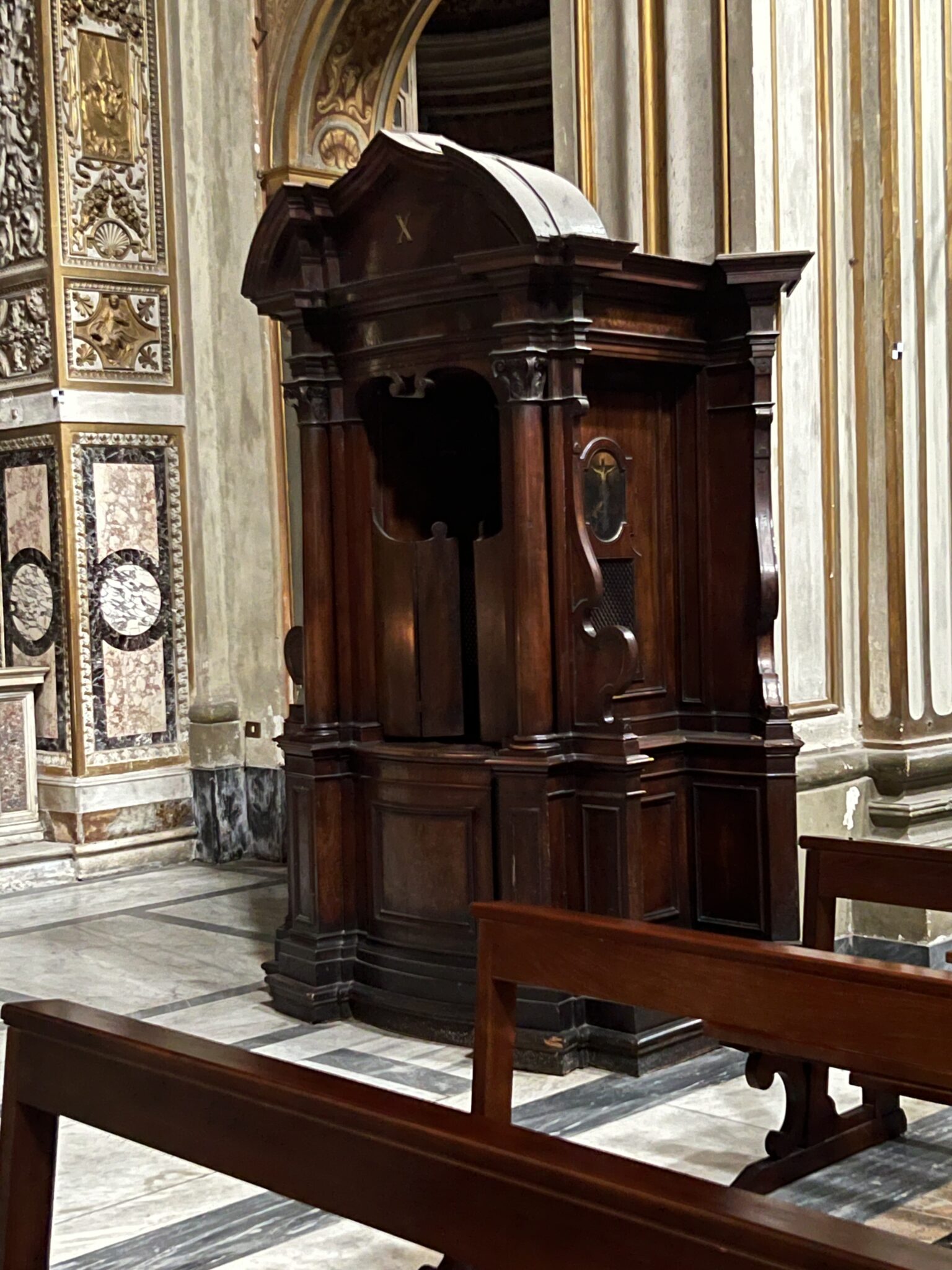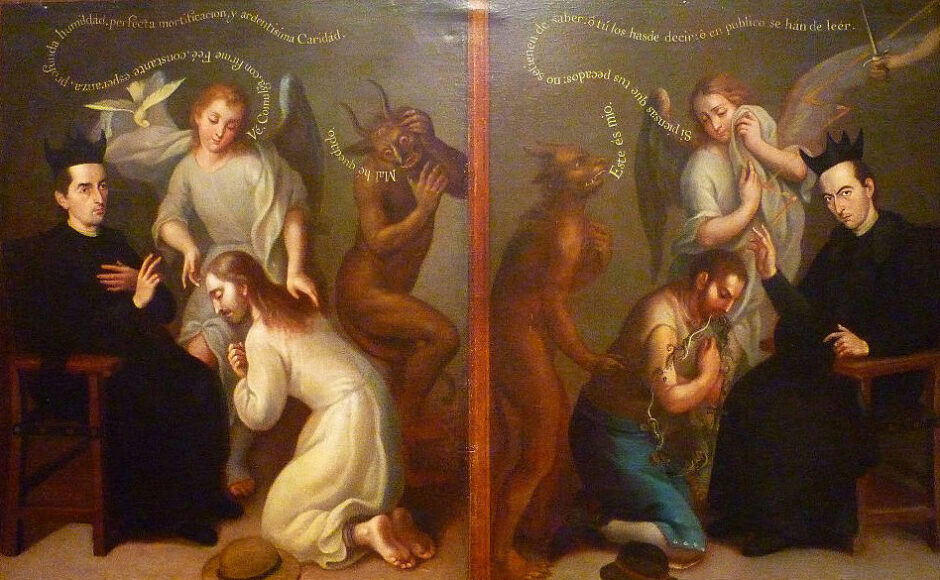
From: Instructiones Fabricae et Supellectilis Ecclesiasticae, I, 23 by St. Charles Borromeo:
Even in the most modest church there must be at least two, to keep men distinct from women. If there are many officiants, as in cathedrals and collegiate churches, there will be one for each, always distinct between those reserved for one sex and the other. It must be made of wood, closed on five sides but open on the front, with the possibility however of locking it with a gate or a grate so that “when the confessor is not there, lay people, vagabonds or dirty people cannot sit there and sleep idly, with irreverence of the ministry that is exercised there. It must be divided vertically into two areas, one for the priest and one for the penitent, and must be placed so that the priest is always towards the high altar and the penitent towards the door. The partition between the two areas must be opened by a door which towards the confessor will have a curtain and towards the penitent a rather thick grate with holes the size of a chickpea. On both sides there will be reminder signs for the respective functions.
[…]
In every parish church there will be two confessionals so that the men, often displaying a certain amount of irreverence regarding the holy place or the holy action and not without offence to the pious objects, will not be intermingled with the women, nor crowded together with them when there is a large number for confession, but separated. In this way the men confess in one confessional, the women in the other; as is the case in many of the churches in this province, in which there are distinct parts for men and women; in those cases where the distinction has not been confirmed by a provincial decree, one confessional will be for the use of the parish priest, and the other for that of another confessor priest if, with the permission and approval of the Bishop, it is at times necessary to have him called in when there are a great number of penitents.
[…]
The prescribed form to be used in building the confessional is described below. Once this has been observed, some decoration may be added, such as carved moldings on the front or some other type of suitable ornament. First of all the confessional will be made entirely of worked wooden panels, either walnut, or some other type of wood. These will enclose it on both sides and on the back and will cover the upper part, while it will be completely open in the front part, and must not be closed in any way. It can however have, above all in the more frequented churches, a latticework door or a wooden gate, the parts of which are about four ounces apart, furnished with lock and key so that, when the confessor is not there, laymen, vagabonds or dirty people cannot idly sit or sleep therein, with irreverence of the sacred function there exercised.
Black to move and mate in 3.

NB: I’ll hold comments with solutions ’till the next day so there won’t be “spoilers” for others.
Please remember me when shopping online and use my affiliate links. US HERE – UK HERE WHY? This helps to pay for health insurance (massively hiked for this new year of surprises), utilities, groceries, etc.. At no extra cost, you provide help for which I am grateful.
I’d rather not report on the disappointing results of the Chess.com Classic 2024. Everything changed on a single blunder.
On a happier note, help the traditional Benedictine monks of Le Barroux. Get some of the wine they make from the revived vineyards of the Avignon Popes in southern France.


































1. . . . Bxf2+
2. KxN Rh5+
3. Rh4 RxR++
I read things like this and it’s amazing how far we have gone and how much we have lost. The faithful have been deprived of so much.
Anyhow, now I want to go to confession. Think I will this weekend.
I believe St. Jean Marie Vianney used different confessionals for men and for women.
1. Bxf2+ Kxh2
2. Rh5+ Rh4
3. Rxh4#
oops, black should be second, and since white just moved the king:
1. Kg1 Bxf2+
2. Kxh2 Rh5+
3. Rh4 Rxh4#
I grew up and was raised in the faith after the council.
I don’t remember any gender segregation for Confession.
When did it start becoming mixed?
For those of you who are confused, the Northern European attitudes toward deportment in Church which we are accustomed to thinking of as normative and historical were not shared by our Italian co-religionists during the Renaissance.
To put it gently, the women dressed inappropriately, the men stared inappropriately, and they both whispered to each other profusely. It was a serious problem.
@TheCavalierHatherly: Thanks for providing some historical context.